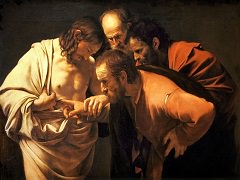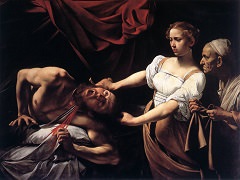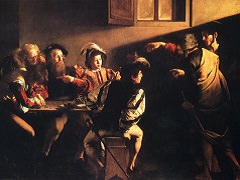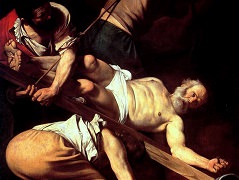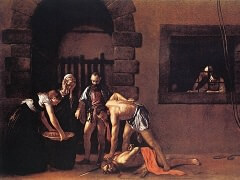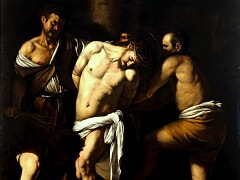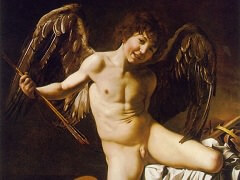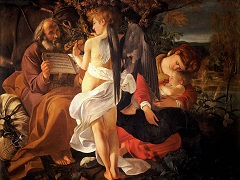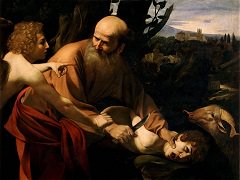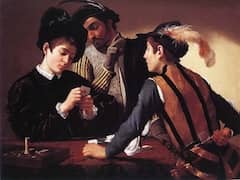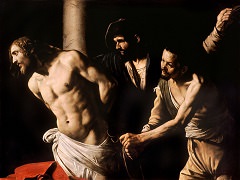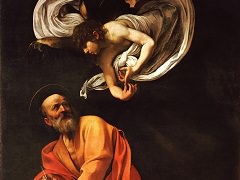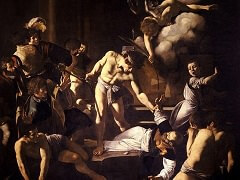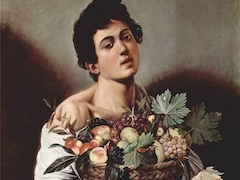Resurrection of Lazarus, 1609 by Caravaggio
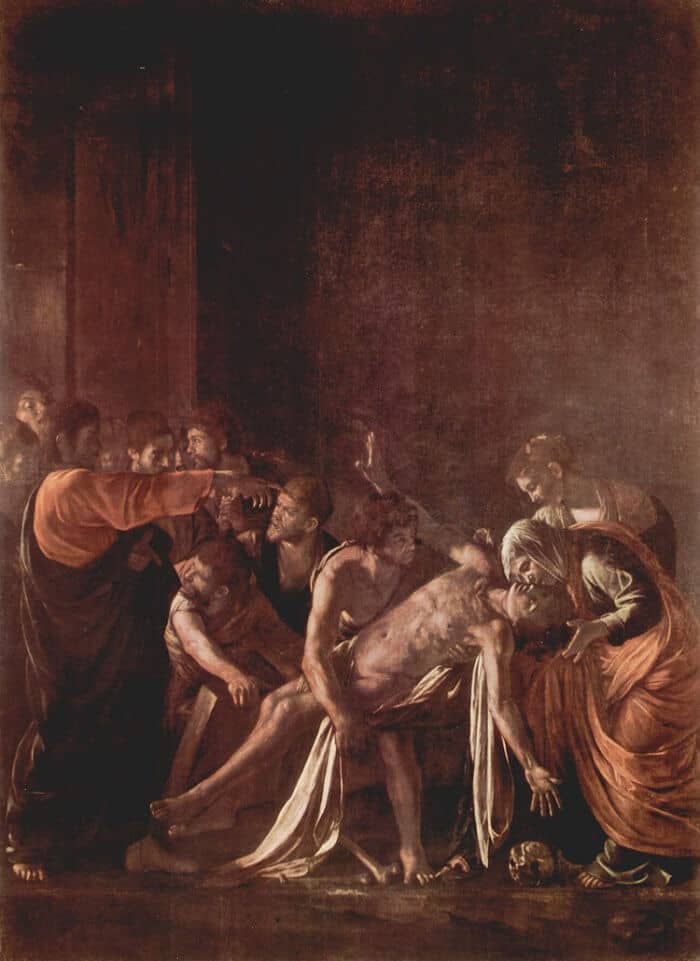
Despite the careful restoration carried out at the Istituto Centrale del Restauro, Rome, in 1950-51, The Raising of Lazarus is in poor condition and covered with a fair amount
of repainting. It is also possible that some distinctly weak passages were due to the assistance at the time of painting of certain local artists such as Mario Minniti. Yet the work
remains one of Caravaggio's outstanding achievements, in which the broad handling of his late style activates the picture surface and contributes to the tense drama of the multi-figure
composition.
As in The Burial of St. Lucy, Caravaggio made use of a tightly-knit frieze of figures which cuts into the lower part of what is, for him,
a greatly heightened and deepened space. This interaction of an almost classical relief of figures, in which individuals are subsumed in a surge of corporate emotion and effort,
with a substantial void which both echoes and absorbs that emotion, is different from the more closely focused and individualized dramas of his earlier and middle periods and in some
ways anticipates the spiritual feeling of Rembrandt. Light is, more than ever, presented as a metaphor for the power of the spirit in the way in which it falls on the palm of Lazarus's
right hand, opened to embrace the resurrection effected through Christ, and the involvement of everyone in the mystery is stressed as much by light as it is through the close proximity
of bodies. Various sources have been suggested for the unusually powerful pose of Lazarus, and the most plausible of these would seem to be an engraving by Diana Ghisi after Giulio Romano
showing the battle raging round the body of Patroclus; Susinno's description (1724) of how Caravaggio had two men hold up a freshly exhumed corpse for him to copy is probably apocryphal,
but not beyond the bounds of possibility.
The picture was presented to the Church of the 'Padri Crociferi', or 'Ministri degli Infermi', in Messina by the Genoese merchant Giovanni Battista de' Lazzari on
10 June 1609. A document of 6 December 1608 reveals that Lazzari had undertaken to construct the main chapel in the church and to decorate it with a painting of The Virgin,
Child, St. John the Baptist and Other Saints. Caravaggio had almost certainly not come to Messina by that date, and it seems probable, therefore, that when he did arrive
and was awarded the commission the subject was changed at his own request. Susinno, in fact, said that Caravaggio himself suggested the subject as being appropriate for
an altarpiece commissioned by the Lazzari family, the Italian word for 'Lazarus' being 'Lazzaro'.

